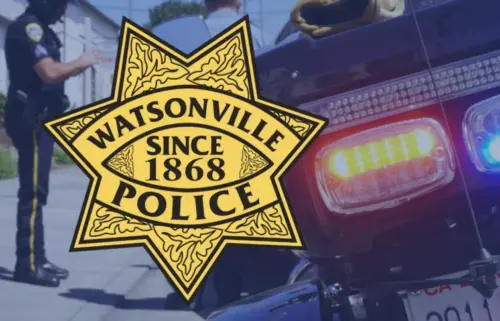Special Report: Clues your child could be mixed up in the wrong crowd
It’s the number one youth crime problem in many Central Coast cities – gangs. Recent studies show a student who isn’t reading at the level they should be by the third grade is six times more likely to drop out of high school, and a dropout is 63 times more likely to wind up behind bars. Now, community groups are renewing their efforts to reach those most vulnerable. At some point, we are all impacted directly or indirectly by gang crime whether you are a victim of burglary, drug crime or worse. But the trouble starts at a young age.
The youngest homicide victim this year was 17-year-old Cesar Gonzalez. Three of the suspects arrested for his murder are all under the age of 18. But police can’t arrest their way out of the problem and so preventing kids from getting into trouble in the first place was the main focus of the first ever “Gang Prevention Summit” in Monterey County recently, and we were there.
They call it a success. 91% of the 200 kids who were there say it’s prompting them to make changes in their lives to achieve their goals and be successful. Unfortunately for others, it hasn’t always been that easy.
“If someone would’ve told me I was better off staying out of trouble then maybe I would’ve listened,” Ismael Valdivia, a former gang member said.
Valdivia spent most of his 28 years in trouble. Here’s how it started.
“I was young, I was 11,” Valdivia said. “I was arrested for gang assault and strong armed robbery. We beat some dude up and took his bike. So that was my first time in juvenile hall.”
Between the ages of 11 and 14, Valdivia committed burglaries, robberies and vandalism. He says many of those victims weren’t tied to gangs at all. So here’s his first message – if you think crime begins and ends in cities that have a gang problem, you’re wrong. His second message – if you want to keep kids out of gangs, you better get to them when they’re young.
“That’s what kids have to hear,” Valdivia explained, “They don’t have to steal and commit crimes. If you want to be smart and stay out of trouble, then do that.”
That message was the main focus of a first of its kind “Gang Prevention Summit” this year. Organized by the Boys and Girls Club of Monterey County, it attracted 300 parents and kids from across the Central Coast. Most of the kids at the summit are at that fork in the road right now. Some are already facing tough decisions about the crowed they are going to hang out with.
If you’re a parent, the warning signs of gang activity could be as close as your child’s bedroom. But would you be able to recognize those signs? Apparently the Mexican Mafia uses panthers as one of their symbols. Or the term “salad bowl.” While it seems innocent enough to many people, someone could identify that term with a possible norteo.
As police spoke, Tauvia Harrigan focused on every word. According to the National Crime Prevention Council, her 12-year-old daughter Imani is at the target age to go down the wrong path with drugs or even gangs. The Harrigans invited us back to their home in Greenfield and Tauvia took a second look through Imani’s room. Nothing stood out but she says she is always worried.
“I do believe she will be tested,” Harrigan said. “I believe that the temptation will be there.”
And not just for Imani. Tauvia watched her son face the dangers of bad decision firsthand.
“My son said, ‘Mom, when I got out of the car they all came up to me, like flashing, and I know one of them had a gun because I saw the gun in the car,'” Harrigan recounted.
Valdivia has been on the wrong side of those encounters too many times to count. He says if someone would’ve reached out to him at a young age and told him the real truth about going down the wrong path, he might have thought twice and saved himself a lot of pain.
“They don’t tell you about being locked down, starving, nobody writing to you and being lonely and hungry,” Valdivia said. “You don’t want to go there, it sucks.”
It’s a message he hopes these kids listen to now, while they still have time to choose the right path instead of the wrong one. Now a father of four, he is teaming up with his former probation officer to work on a street outreach program in Watsonville. The idea is to get former gang members like himself to find these at-risk kids and take them out for a day of fun, outside of their neighborhood and those bad influences.


